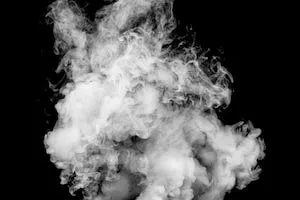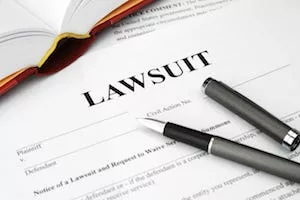
One of the ways in which toxic waste can harm your family is through what is known as "vapor intrusion," in which toxic chemicals in the groundwater or soil convert to a gas and then seep into buildings, such as a home. This can happen through cracks in basement floors, foundation walls, utility pipes or ventilation systems.
At The Collins Law Firm, we fight on behalf of clients nationwide whose health and property value are threatened by the potentially harmful effects of vapor intrusion. We are here to help you get the results that will make a difference in your life.
When companies carelessly dispose of volatile chemicals like TCE, PCE, vinyl chloride and benzene, that behavior can have serious consequences for the health of those living nearby. What is even worse, the toxic vapor that is often created may go undetected for many years, even as it is causing serious harm. Once the presence of the vapor is finally detected in or underneath the home, the impact on the family’s health and their home’s value may be devastating.
In cases like these, families need protection against the damaging effects of the toxic vapor; a thorough clean-up of the contamination causing the toxic vapor; and compensation for any loss of property value or illness that has resulted.
Few attorneys in the entire country know how to deal with cases such as these. At The Collins Law Firm, our experienced and aggressive trial attorneys know the often complex law and science involved, and work with the most knowledgeable environmental experts to strengthen your family's case.
If you are concerned that your family might be at risk from vapor intrusion, please let us help you. Contact us at (630) 527-1595 for a free consultation.

Vapor intrusion happens when chemicals in contaminated groundwater or contaminated soil turn into gas ("vapor"), and then migrate ("intrude") into the air inside of a home or other building. The great concern, of course, is if these chemicals are dangerous to human health, especially if the people breathing the vapors cannot smell the dangerous chemicals, and therefore do not know they are present.
When vapor intrusion occurs, it is typically the result of a process that began many years, perhaps even decades, earlier. There are many possible scenarios. One is that chemicals, which years ago may have been buried, poured down a drain, dumped onto the ground, or leaked from a supply tank at a nearby factory now, years later, have contaminated the area’s soil or groundwater near homes or other buildings. Another possibility is that the chemicals leaked into groundwater from a nearby landfill, which was not adequately lined at the bottom, and therefore the chemicals were allowed to escape. Yet another is that the chemicals leaked from an underground storage tank – such as at a gas station – and infiltrated the groundwater below.

Once the chemicals have vaporized, they can travel horizontally and vertically through soil, and up from the contaminated groundwater, which was the chemicals’ original source. They move as any gas moves, following the path of least resistance. Vapors may enter a home by any number of ways (called "pathways") including:
Once vapor intrusion is proven to be occurring, or is even reasonably expected to be occurring, steps should be immediately taken to protect those breathing (or even potentially breathing) the vapors. Such steps include the installation of any number of "mitigation" systems, the best of which are designed to prevent the contaminated vapors from entering the breathing space in the first place. (See the section on protecting your family against vapor for a discussion of vapor mitigation systems.)
Whether the air inside your home (or office building, for example) is threatened by vapor intrusion depends upon a number of factors, especially the following:
Here is a list of the chemicals most likely to be found in the vapor threatening to intrude into breathing spaces of a home. They are known as "Volatile Organic Compounds," or "VOCs," because they are readily converted into vapor:
Here are other important things to keep in mind when considering the health threats posed by VOC-contaminated vapors:
Sub-Slab Testing - The most reliable form of testing for the presence of contaminated vapor is to sample the vapor in the soil near a home or, better yet, beneath the home's foundation (called the "sub slab"). The results of this testing are often immediately available, but should be confirmed by having the samples sent to a laboratory which specializes in analyzing the results of such testing.
There are two other forms of investigation for vapor intrusion that should be mentioned.
Modeling - "Modeling" is an attempt to predict the concentration of contaminated vapor threatening to enter a home's breathing space based upon the concentration of the chemical in the groundwater; the distance between the contaminated groundwater and the home; and other factors. Essentially, modeling substitutes a formula in place of actual testing, mostly to save cost. The theory is that, if the modeling shows that no significant concentration of the chemical will intrude into the home's breathing space, then relatively expensive actual testing for contaminated vapor, and protecting the home's residents against vapor intrusion, need not be done.
The problem is that the modeling can be wrong, concluding that there is no risk of vapor intrusion when in fact the opposite is true. (This is called a 'false negative.") In one famous case in Colorado in 2000 (known as the "Redfield" case), use of a well-accepted modeling formula predicted little or no vapor contamination, when later testing actually revealed significant levels of trichloroethylene ("TCE") and dichloroethylene ("DCE").
Especially because the consequences to a family of a false negative are so serious--i.e., being falsely assured that family members are not breathing contaminated air when in fact the opposite is true--models and formulas are not a reliable substitute for actual testing.
In-home testing - Logic would seem to indicate that the most reliable test to see whether chemical-contaminated vapor is intruding into a home would be a test of the actual air inside the home.
But many experts disagree, for basically two reasons:
Therefore, the most reliable testing for the possibility of vapor intrusion into a home's breathing space is to test the vapor outside the home, either in the yard or, preferably, in the sub-slab.
Important: For accurate results, you must conduct multiple tests
Any testing must consider the fact that vapor is always "on the move", and that its movement is often unpredictable. As a result, no single test is a reliable indicator of the presence or absence of contaminated vapor near a home, let alone throughout an entire neighborhood. For example, contaminated vapor can be found in a high concentration at a single location one day, but not be detected at all at that same location the following day. It can be found in one family's front yard one day, but not at the home next door, or across the street, and yet testing the following week can show the reverse results. Therefore, a reliable understanding of the presence or absence of vapor at a single home may require 4-6 separate tests on that property throughout the year. Likewise, a reliable understanding of vapor in a neighborhood requires multiple tests at multiple testing locations throughout the neighborhood.
A final word: no matter the type of testing for vapor intrusion, the testing should be paid for by the company or persons responsible for creating the threat in the first place. And government's environmental regulators should oversee the testing, to ensure it is properly done, and likely to yield reliable results.

The best temporary protection against vapor intrusion is the installation of a "vapor mitigation system" ("VMS"). One such VMS is a "sub-slab depressurization" system, which operates like a vacuum, sucking the air below the home's foundation, and venting it safely out to the atmosphere above the home, via a pipe running up the length of the home from the "vacuum." The idea is to intercept the contaminated vapors before they have the chance to enter the home's breathing space, and then send them out into the atmosphere where their danger will quickly dissipate.
Such systems must run continuously in order to be effective. There is, of course, a cost to this, as the systems require electricity in order to function. There is also a cost to have a qualified professional install the system in the first place, ensure that it is functioning properly and then periodically inspect and repair the system, as may be needed. The company or persons responsible for creating the threat of vapor intrusion should bear this cost.
It should be noted that even the best designed and installed VMS is not perfect. It is not guaranteed to intercept all contaminated vapor, or to not periodically malfunction.
This is why the VMS is only a temporary means to protect the home's residents against vapor intrusion. The permanent solution, of course, is that the contaminated groundwater, or soil, or both, which is serving as the source of the vapor contamination must be cleaned up. Such remediation can be very expensive, and take a very long time, decades even. This is because, by the time a contamination problem has gone un-remediated to the point that vapor intrusion into a home is threatened, the contamination has been in the environment for a very long time, and cleaning it up therefore cannot be done quickly or inexpensively.
As with the cost of installing, operating and maintaining a VMS, the cost of remediating the source of the contamination should be borne by the company or persons responsible for the contamination in the first place.

Vapor intrusion problems often present the "perfect storm" of circumstances that work against threatened families:
This is where an environmental lawyer experienced in handling vapor intrusion cases can be of enormous help.
The Collins Law Firm has successfully litigated 3 recent vapor contamination cases in the states of Illinois, Indiana and Wisconsin. Our clients and their families were threatened by methane migrating from a landfill in Illinois and by TCE/PCE migrating from industrial facilities in Indiana and Wisconsin. As part of those cases, the firm obtained nearly $18 million in compensation for lost property value, and agreements by the polluters to clean up the contamination.

There are many aspects of a vapor contamination case that are extremely complicated and difficult. Our lawyers have the expertise, from handling many vapor intrusion cases, to represent your best interests. Our lawyers will:
The bottom line is that the stakes--health and property--involved in vapor intrusion problems, as well as the legal and scientific complexity of those problems, means that any family potentially affected by them really must have its own experienced lawyer.

There are two goals of a vapor intrusion lawsuit: protection against future vapor intrusion, and financial compensation for damage and injury that were caused by vapor intrusion (or the threat of it).
Protection: Vapor intrusion can really be dangerous. The chemicals that convert into a gas (or "vapor") and threaten to invade ("intrude") into the breathing space of your home are bad news. TCE, PCE, Vinyl chloride, benzene--just to name a few of the chemicals that easily vaporize--threaten serious health injury if breathed regularly, ranging from a disruption of the central nervous and immune systems to an increased likelihood of certain cancers. Children, the sick and elderly are most in danger. For more information on individual chemicals see our Environmental Blog.
This means that, if there is even a threat of vapor intrusion, humans need protection against it. If the polluter will not voluntarily provide this protection, then you may file a lawsuit to ask a court to compel the polluter to provide it. This is called seeking "injunctive relief", or an "injunction".
There are two kinds of protection you may seek in a lawsuit: short-term, and permanent.
Temporary protection usually comes in the form of a "vapor mitigation system", or VMS. While there are many kinds of VMS, the basic function of each is to prevent the chemical-contaminated vapor from entering the home in the first place. Often, this is accomplished by an experienced technician creating a system which suctions vapors from under the home (in the "sub-slab"), and then pipes them to above the home's roof level, where they are dispersed harmlessly to the outdoor air.
Why is a VMS only temporary?
Because the installation of even the very best-quality VMS does not eliminate the source of the problem, which is the chemical contamination in the soil or groundwater, that threatens to convert to a vapor. So long as that contamination remains in place, the threat of vapor intrusion remains. Under these circumstances, the VMS functions like a gas mask. It prevents a person from having to breathe the toxic gas, but does not eliminate it.
That is why long-term, or permanent, protection is also necessary. Specifically, the contaminated soil and groundwater need to be cleaned up. Now, this can be a very expensive and decades-long process. Nevertheless, until it is done, the families will continue to be threatened by vapor intrusion, and a well-maintained VMS must remain in operation.
Compensation: The reason that people need protection against these chemicals--i.e., they are dangerous to human health--is the same reason why, if the chemicals are discovered to be in nearby soil or groundwater, threatening to intrude in vapor form into your home, the value of your home diminishes. This really doesn't require any more explanation than this: Who wants to buy a home where the indoor air is threatened by toxic vapors? Many home buyers will shop elsewhere, and the loss of these buyers means your home is now worth less.
Likewise, vapor intrusion, or even the threat of it, may seriously disrupt a family's enjoyment of their home. For example, so long as the threat exists, some families will (quite sensibly) avoid using the home's basement, since that is the most likely entry point for contaminated vapors. In extreme cases--for example, where high concentrations of an especially dangerous chemical might intrude--families will evacuate their homes, until they can be assured that the threat of vapor intrusion no longer exists.
In most states, where vapor intrusion has caused a home to lose value, and/or the family's use of the home to be significantly diminished, legal action can be taken to secure financial compensation for those losses.
The saddest reason to have to seek compensation via a lawsuit, of course, is if someone's health has allegedly been injured by exposure to toxic vapors. Such injuries are typically quite serious--cancer, for example--and the legal cases can be quite complex. For example, a person claiming to have been injured by vapor intrusion must have scientific proof both that he/she was exposed to the contaminated vapor long enough for the illness to have developed, and that the vapor (and not something else, like smoking, or family history) was the cause of the illness.
Finally, while filing a lawsuit to secure protection against vapor intrusion, or compensation for serious injury to health or property caused by vapor intrusion, is a very serious undertaking that requires great legal and scientific skill, it is often the only way for a family or injured person to vindicate their rights against the misconduct of a polluter.
Our lawyers know what it takes to get justice for our clients, who are facing long-term health effects--such as cancer and birth defects--or loss of property values due to dangerous chemical vapor intrusion. We not only pursue monetary compensation, we work to force corporations to clean up the air, soil and water so that families can live in their homes without fear.
As a client of The Collins Law Firm, you will benefit from our knowledge, experience and resources, which we will put to use to keep you and your family safe, and to pursue compensation for any physical or financial damages. Call us at (630) 527-1595 (dial extension 221 for Shawn Collins) to schedule a free consultation, if you are concerned that your family might be at risk from vapor intrusion.
"*" indicates required fields











"*" indicates required fields